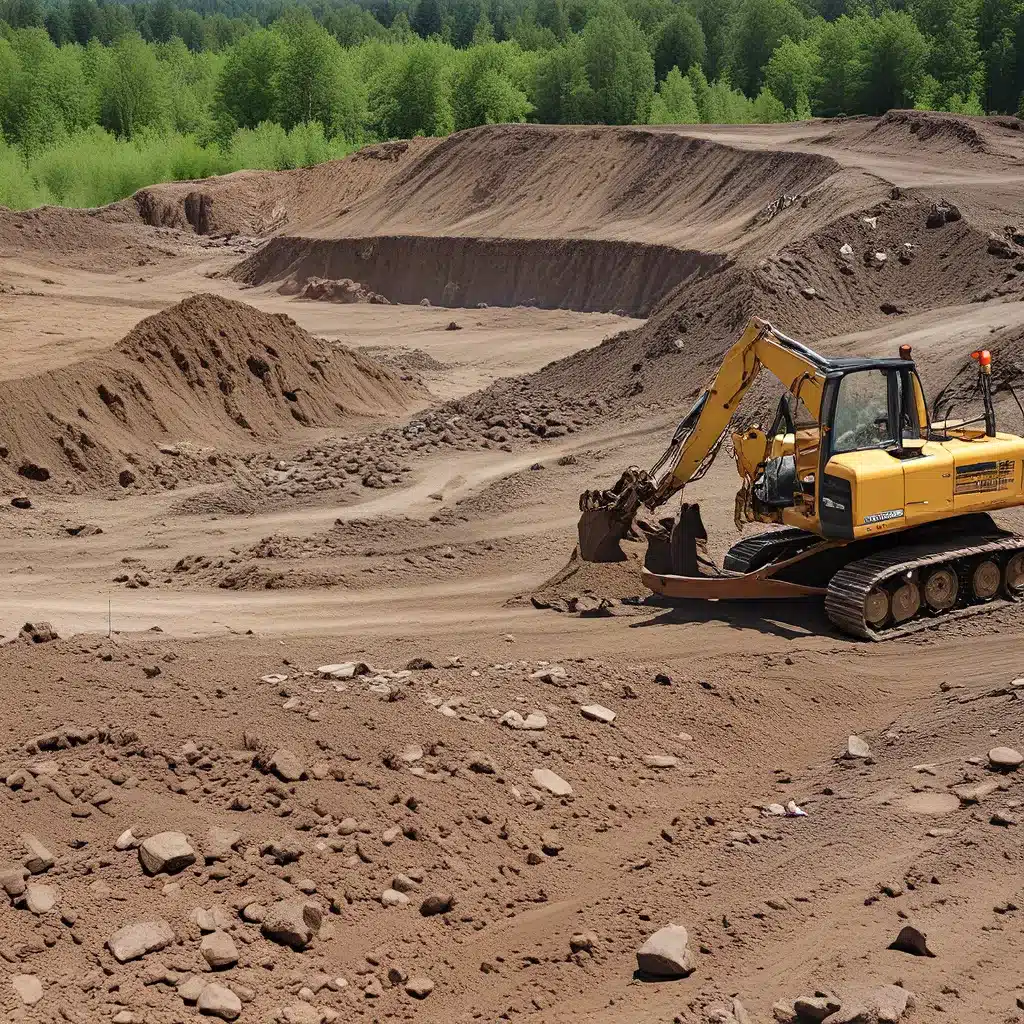
In the ever-evolving landscape of environmental protection, the art of site remediation has emerged as a pivotal force in reclaiming our past and shaping a more sustainable future. As an environmental enthusiast, I’ve been captivated by the remarkable strides that companies like Inland Waters Inc. have made in tackling the complex challenge of restoring contaminated sites to their former glory.
Unraveling the Tapestry of Contamination
Have you ever wondered what happens to the land after oil and gas drilling operations cease? It’s a question that has intrigued me for years, and the answer lies in the intricate process of site remediation. As I delved deeper into this topic, I discovered the North Dakota Department of Mineral Resources (DMR), whose mission is to “balance responsible resource development with environmental protection.”
The DMR’s work in North Dakota has been nothing short of remarkable. They’ve overseen the successful reclamation of over 10,400 wells and facilities, with an additional 1,500 nearing completion. What’s even more impressive is that less than 1% of these sites require long-term environmental monitoring, a testament to the effectiveness of their remediation efforts.
The Anatomy of Site Remediation
The process of site remediation is a complex and multifaceted undertaking, involving a meticulous sequence of steps. Picture a well-choreographed dance, where each move is carefully calculated to restore the land to its natural state.
The first step is clearing the site, which involves removing equipment, waste, and debris. This is followed by stabilizing the soil, replacing gravel with soil to prevent erosion. The final touch is the re-planting of native species, reseeding the area with grasses and plants that are indigenous to the region.
But the journey doesn’t end there. The state must officially approve the reclamation project before it’s considered complete. This process can sometimes take even longer than the physical restoration work, as the authorities ensure that every detail has been meticulously addressed.
The Unsung Heroes of Remediation
As I delved deeper into the world of site remediation, I was amazed to discover the diverse array of professionals involved in this critical work. It’s not just the heavy machinery operators and civil engineers – there’s a whole cast of characters working tirelessly behind the scenes.
Picture a well-oiled machine, with each component playing a vital role. There’s the project coordinator, managing the entire operation and ensuring everything runs smoothly. Then there are the soil testers, evaluating the health of the land to guide the restoration strategies. Regulatory overseers keep a watchful eye, ensuring compliance with environmental regulations.
And the list goes on – administrative supporters, power companies, roustabouts, and even flushing line experts. It’s a veritable melting pot of expertise, all converging to breathe new life into these once-contaminated sites.
Shaping a Sustainable Future
But the impact of site remediation goes far beyond just restoring the land. It’s about creating a sustainable future where resource extraction and responsible land management work hand in hand to support the prosperity of our communities.
By reclaiming these contaminated sites, we’re not only protecting the environment but also opening up new opportunities for economic growth. Imagine a future where abandoned oil and gas wells are transformed into thriving farmlands or lush meadows, providing a livelihood for farmers and ranchers.
And it’s not just about jobs – it’s about the larger environmental stewardship that these remediation efforts foster. By ensuring the continued productivity of fields and pastures, we’re supporting the very communities that depend on them. It’s a positive cycle of resource extraction, land restoration, and community prosperity.
The Challenges and Innovations in Site Remediation
Of course, site remediation is not without its challenges. In New York, for example, the rich history of industrial activity has left behind a tapestry of contaminated sites, each with its own unique set of obstacles.
But companies like BE3 are rising to the occasion, employing innovative strategies and cutting-edge technologies to tackle these daunting tasks. From in-situ bioremediation to advanced oxidation processes, they’re pushing the boundaries of what’s possible in site remediation.
And it’s not just about removing contaminants – it’s about promoting sustainable redevelopment. By integrating green infrastructure, renewable energy solutions, and sustainable design principles into their plans, BE3 is breathing new life into these once-blighted areas, creating vibrant eco-friendly spaces that benefit both the environment and the surrounding communities.
The Future of Oilfield Waste Management
As the energy industry continues to evolve, the management of oilfield waste has become a pressing concern. But companies like Desert Environmental are leading the charge in this arena, transforming the way we think about waste management.
Through their state-of-the-art facilities and cutting-edge technologies, Desert Environmental is setting new standards in the industry. Their advanced R9 reclamation plants are specifically designed to process and reclaim a wide variety of waste materials, maximizing efficiency and minimizing environmental impact.
But it’s not just about the technology – it’s about the holistic approach. Desert Environmental offers end-to-end solutions, managing the entire lifecycle of energy waste, from initial drilling operations to site remediation. By streamlining processes, reducing waste, and reclaiming valuable materials, they’re providing their clients with efficient and sustainable waste management options.
Embracing the Future, Honoring the Past
As I reflect on the remarkable strides being made in site remediation and environmental stewardship, I’m filled with a sense of hope and optimism. These companies are not just cleaning up the past – they’re building a brighter tomorrow, one reclaimed site at a time.
It’s a delicate balance, this dance between resource extraction and environmental protection. But with the dedication and innovation of the professionals in this field, I believe we can strike that balance and create a future where our communities, our economies, and our planet can thrive in harmony.
So, let’s raise a glass to the unsung heroes of site remediation, the visionaries who are reclaiming the past and shaping the future. And let’s continue to support the companies and organizations that are leading the charge in this critical endeavor, for the betterment of us all.


